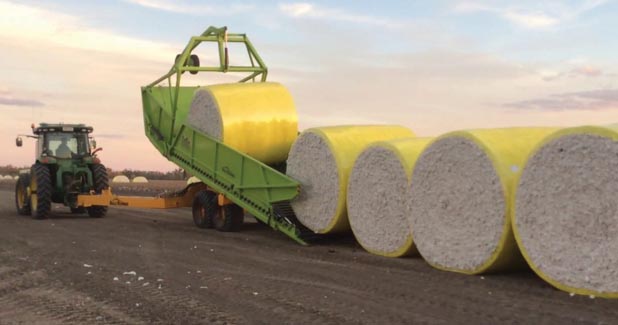
Bale management for spinning industry
Real bale management is based on individual bale results of all lots and the mixing will be based on the individual bale results, writes Muluneh Chalie, Lead Textile Engineer, ETIDI.
Real bale management is based on individual bale results of all lots and the mixing will be based on the individual bale results, writes Muluneh Chalie, Lead Textile Engineer, ETIDI.
Bale management is a judicious selection of cotton bales to achieve consistent performance and quality in spinning mills. The performance of spinning process and yarn quality will depend upon the mixing quality and consistency in the mixing quality. How to get a better consistent mixing quality with available results are detailed in this article.
Influence of fibre properties
Fibre properties which will influence the yarn quality and hence the process performance is shown in figure as published by Uster Technologies.
Length and micronnaire value will influence all the yarn quality parameters. Hence formulating the mixing based on these two parameters with controlled condition will result better yarn and performance.
Model mixing formulation
Within the mixing the range of length should be 2 mm and between mixing it should be less than 0.5 mm preferably uniform. In case of micronnaire within mixing the CV% should be less than 8 per cent and between mixing it should be less than 0.1. These are Uster recommendation to get better yarn results. Consider the following lot results and probable mixing formulation.
Here the length variation observed is not much but there is high variation in micronnaire. In the above lots, L4 having less micronnaire value, for the time being we can withhold this lot and issue mixing to reduce the micronnaire range in mixing below 0.5 to get better yarn results. Since the number of fibre in the cross section of yarn depends upon the fibre micronnaire, the variation in micronnaire value will create more thin and thick places. After eliminating the lot L4, the total available stock is 2,000. Lot1 has 200 bales and the proportion is 200/2000 x 100=10. If required number of bales per mixing is 20, bale per mix from Lot L1 will be 10/100 x 20 = 2.
All the available lots are averaged out to get uniform results.100 mixing will have uniform results. After exhausting these 10 lots, the lot no L4 bales can be issued with next coming lots, if not can be given to Open end spinning mixing.
Laydown: Care should be taken that no two bales of same variety or lot placed near to enhance mixing homogeneity. Give different color for easy identification to all the lots and make sure to place them uniformly distributed in the single repeat; then repeat the repeat to the full marked laydown area. There are 10 different lots to be mixed in our above example and laydown arrangement shall be as follows(with two repeats) for better homogeneity.
Mixing based on individual bale results
The above example is based on lot results, it will give good results and avoid mix to mix variation. However, if the between bale variation in the given lot is high, the results may be not so consistent.
Hence real bale management is based on individual bale results of all lots and the mixing will be based on the individual bale results. Each bale is given identification number and results are stored in system with bale identification number. The mixing formulation is explained with the following example.
In tested all the bale results, the micronnaire distribution observed is as follows, The eliminated bales can be used for lower grade or Open end mixing. For convenience of handing first two ranges are clubbed together as 4.81 to 5.00, then there will be 8 categories and it can be named as A to H. The bales are stored at godown according to the category.
If the required bale per mixing is 36, then from each category number of bales per mixing can be as given in the above right hand side table. For example, from Lot A, 4.1/100*36 = 1.476 equivalent to 1 bale per mixing. Hence the same results of mixing will be observed for about 87 mixings (=3142/36) which will result consistent performance and yarn quality. The above example is based on micronnaire category which is more appropriate for knitting yarn production, where micronnaire variation will influence fabric evenness. Here the micronnaire CV% within mixing is maintained below 8% as per Uster recommendation. Similarly, one can decide the category based on length also if needed.
Also as explained earlier the during laydown preparation it should be ensured that the same category/mic bale should not be placed at adjacent side as well as the distance between two bales of same category should be maintained as uniform as possible to ensure the homogeneity for better results.



